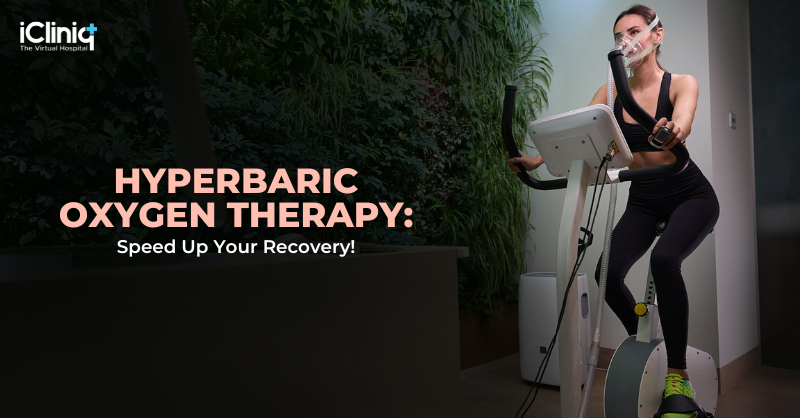1. What Is Hyperbaric Oxygen Therapy?
Hyperbaric oxygen therapy is a diverse approach that involves inhaling 100% pure and fresh oxygen in a pressurized room or chamber. The chamber creates a high-pressure environment that allows your respiratory system to take in oxygen more efficiently than it would at normal air pressure. The oxygen-rich blood stimulates the release of growth factors and stem cells, encouraging healing in body tissues affected by infection, injury, or poor blood flow. The administration of hyperbaric oxygen therapy has been expanded, and now it has become a versatile treatment option that helps patients not only struggling with chronic wounds but also with overall health enhancement.
2. How Does Hyperbaric Oxygen Therapy Work?
Hyperbaric oxygen therapy is done under a hyperbaric chamber, where the atmospheric pressure is adjustable, and it can be increased to 1.5 to 3 times higher than the normal air pressure. Under this high pressure, the blood tends to increase the absorption of oxygen. The oxygen is carried by a red-colored pigment known as hemoglobin in red blood cells, but during hyperbaric oxygen therapy, the blood can absorb oxygen directly into plasma, tissues, and organs, improving the blood supply to the wounds or inflamed areas of the body. The therapy session may depend on the patient’s condition and treatment plan, but it mostly lasts between 60 and 90 minutes.
3. Healing Wounds with HBOT
For people suffering from chronic injuries or wounds, such as diabetic foot ulcers, hyperbaric oxygen therapy can be the answer. In hyperbaric oxygen therapy, the patient is supplied with high-pressure oxygen that promotes blood supply, which enhances healing, improves recovery time, and prevents further complications.
Hyperbaric oxygen therapy is considered in managing tissue damage in patients undergoing radiation therapy, mostly seen in cancer patients. It enables tissue regeneration and repair by increasing oxygen levels. HBOT can enhance the quality of life for patients with chronic and persistent wounds and inflammation.
4. Enhancing Cognitive Function and Recovery
Research shows that hyperbaric oxygen therapy (HBOT) may benefit people suffering from traumatic brain injuries or strokes. These conditions can lead to serious brain impairments, memory loss, problems related to concentration and maintaining focus, and general mental fatigue. It can help restore mental functions by promoting brain cell recovery. By improving the oxygen supply to the brain tissues, this therapy can accelerate healing and recovery and support overall brain health.
5. Exploring HBOT as a Holistic Wellness Approach
As we all know, hyperbaric oxygen therapy is commonly used as a medical intervention, but it is much more beneficial than you think. In recent times, hyperbaric oxygen therapy has gained popularity in reducing inflammation and speeding up recovery, especially in athletes, and rejuvenation. Hyperbaric oxygen therapy is a therapeutic approach for those looking for natural methods to improve their body’s overall performance and longevity.
Hyperbaric oxygen therapy may have some common side effects, such as ear discomfort caused by high pressure in the chamber, sinus problems, or temporary vision changes. There can be some severe complications, too; for example, oxygen toxicity, lung damage, or claustrophobia can be seen. Therefore, it is highly recommended for patients to undergo hyperbaric oxygen therapy under the supervision of qualified healthcare professionals.
Hyperbaric oxygen therapy is an excellent approach to healing. It uses concentrated oxygen to improve repair and regeneration mechanisms and help in recovery. From wound care to neurological rehabilitation, this therapy is versatile and promising and continues to unlock new possibilities in modern and advanced medicine.
Publisher: Source link










